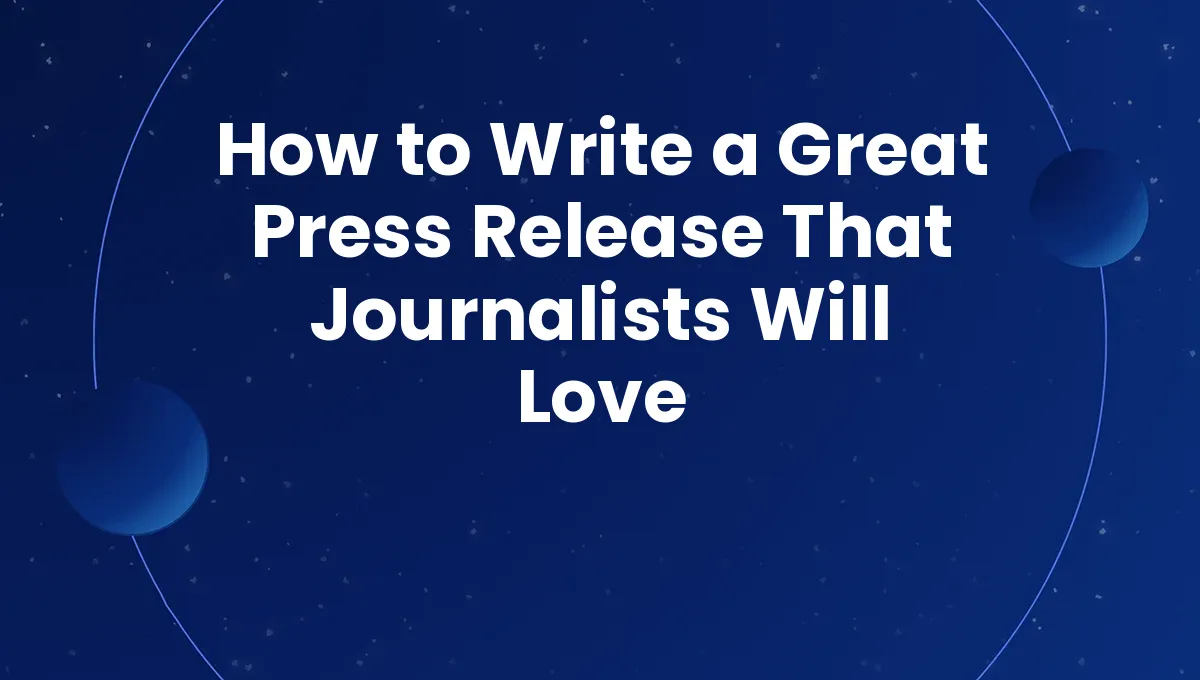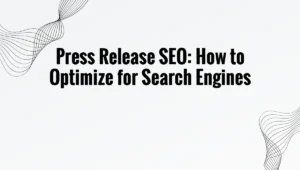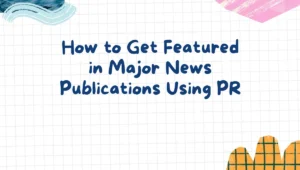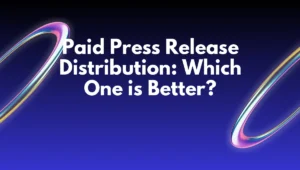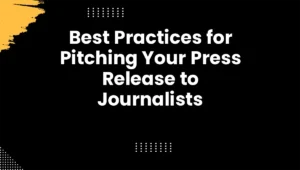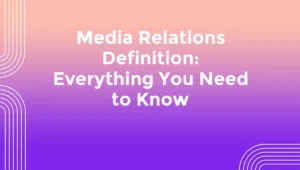How to Write a Great Press Release That Journalists Will Love
In today’s fast-paced media landscape, crafting a compelling press release is more notable than ever. with journalists inundated by a constant stream of data, standing out from teh crowd is crucial for gaining the attention your news deserves. A well-written press release can be your ticket to effective dialog, bridging the gap between your association and the media. At MillionairePR, we understand the nuances of storytelling in a way that resonates with journalists and captivates their audience. In this article,we’ll explore practical strategies and key elements that will help you create a press release that not only informs but also inspires action.Whether you’re announcing a groundbreaking product,a noteworthy event,or a significant progress in your organization,mastering the art of the press release will empower you to make headlines and elevate your brand’s visibility. Join us as we delve into the essential components of a press release that journalists will love.
Crafting a Compelling Story: The Heart of Your Press Release
At the core of every captivating press release lies a story that resonates with its audience. Journalists are drawn to narratives that evoke emotions, inspire curiosity, or spark interest. To craft a compelling story, begin by identifying the key message you wish to convey. Establish a clear beginning, middle, and end—this structure will help guide the journalist through your narrative. Include quotes from relevant figures or stakeholders to enhance credibility and provide a human element. These quotes can serve as powerful hooks that draw readers in and add authenticity to your message.
Additionally, incorporating visual elements can elevate your narrative substantially. Utilize high-quality images, infographics, or charts that complement your text and provide additional context. A well-structured press release might include a table summarizing key details or data points, like so:
| Element | Purpose |
|---|---|
| Headline | Captures Attention |
| Subheadline | Highlights Key Message |
| body | Tells the Story |
| Quotes | Adds Credibility |
| Call to Action | Encourages Further Engagement |
By weaving these components into a well-rounded narrative, you not only enhance your press release but also increase its potential for being picked up by journalists. Remember that the heart of your story should align with the values and ethos of your brand, ultimately resonating with the audience that the press release aims to reach.
Essential Elements That Capture Attention: From Headlines to Quotes
To craft a compelling press release, the essence lies in the first few words that greet the reader. Headlines should be impactful and evocative, promptly resonating with your audience by incorporating key details like the who, what, when, and where. this is your chance to create curiosity and draw attention to your story. Along with an eye-catching headline, subheadings can offer a brief overview, guiding journalists to understand the crux of your announcement at a glance. Consider the following elements that can elevate your headline:
- Strong Verbs: Choose action-oriented words that convey urgency and importance.
- Numbers or Percentages: Incorporate data to make your announcement more credible and enticing.
- emotional Triggers: Use compelling language that resonates with your audience’s sentiments.
As you move deeper into your press release, quotations from key stakeholders—be it executives, experts, or customers—serve as powerful testimonials that bolster your narrative. they can breathe life into your prose, transforming statistics into relatable stories.Ensure the quotes are not only insightful but also succinct, capturing the essence of your message. For clarity, consider presenting these quotes in a structured format, as seen in the table below:
| Speaker | Quote |
|---|---|
| CEO John Doe | “Our latest innovation is set to redefine the industry standards.” |
| Expert Jane Smith | “This development addresses key pain points for our users.” |
Tailoring Your Message for the Media: Understanding Journalists’ Needs
To truly resonate with journalists,it’s essential to align your press release with their specific needs. Start by acknowledging that journalists are constantly on the lookout for gripping stories that offer fresh insights. Your message should present clear and compelling reasons why your announcement is newsworthy. Focus on the five Ws—who, what, when, where, and why—to construct a narrative that captures their attention. Ensure your release includes relevant quotes from key figures in your organization to provide authenticity and human interest. Here are some elements that should be included to structure your message effectively:
- Attention-grabbing Headline: Craft a captivating title that summarizes the essence of your news.
- Concise Summary: Include a brief overview at the beginning to hook the reader.
- Call to Action: End with a clear directive on what you want journalists or readers to do next.
Additionally, consider the medium through which your press release will be disseminated. Journalists appreciate well-organized information that can easily fit into their busy schedules. Utilizing tables can definitely help present data or comparisons clearly. Such as, if you’re announcing a new product launch, a simple table can outline features versus competitors, making it highly digestible. Here’s a sample table format that highlights key aspects:
| Features | Our Product | Competitor A | Competitor B |
|---|---|---|---|
| Price | $99 | $129 | $109 |
| Warranty | 2 Years | 1 Year | 2 Years |
| Key Feature | Eco-Kind | No | Yes |
Follow-Up Strategies: building Relationships Beyond the Release
After your press release has been distributed, it’s essential to initiate and nurture relationships with the journalists who may show interest in your story. A dedicated follow-up strategy can not only keep the conversation alive but also position your brand as a resourceful partner for future stories. To effectively engage with journalists, consider these approaches:
- Personalized emails: Tailor your follow-up messages to address specific points of interest for each journalist, showing that you value their work and expertise.
- Social Media Engagement: follow journalists on platforms like Twitter or linkedin. Engage with their posts to build rapport and keep your brand on their radar.
- Offer Exclusive Content: Provide journalists with exclusive insights, additional data, or access to interviews that can help them build their stories.
- Feedback and Dialogue: Encourage feedback on your releases and invite open dialogue to understand how you can serve their needs better.
| Follow-Up Strategy | Benefit |
|---|---|
| personalized emails | Builds a unique connection with each journalist. |
| Social Media Engagement | Keeps your brand top of mind. |
| Exclusive Content | Encourages journalists to think of you as a go-to resource. |
| Feedback and Dialogue | Enhances understanding of the journalist’s needs. |
By proactively engaging with the media after your press release has gone live,you foster lasting relationships that go beyond the initial release. Remember, triumphant media relations hinge on cultivating trust and being a reliable source of information. Implementing these effective follow-up strategies will not just help you today, but lay the groundwork for future collaborations and positive media coverage.
The Conclusion
In a world brimming with noise, crafting a press release that captures attention can feel like a daunting challenge. Though, by applying the principles outlined in our guide, you equip yourself with the tools necessary to stand out in a crowded media landscape. Remember, the art of writing a great press release goes beyond mere information; it’s about storytelling and creating a connection. Whether you’re announcing an event, launching a product, or sharing groundbreaking news, authenticity and clarity will always resonate with journalists.
As you embark on your press release journey, keep in mind the delicate balance between detail and brevity, and also the importance of a compelling angle that speaks to your audience’s interests. With practice and perseverance, you can transform your press release into an indispensable asset that journalists will eagerly embrace.
So, take a deep breath, put pen to paper (or fingers to keyboard), and let your voice shine through. Remember, every great story begins with a single release. Happy writing!
